Today’s post is all about finger isolation: what does finger isolation mean, why this fine motor skill is important, and even finger isolation exercises and activities to support precision and dexterity in the fingers. As children develop dexterity in fine motor skills, more precision and refined movements allow for coordinated skill work. It’s through this motor skill that one can do specific tasks that use only one finger or several fingers.
Finger isolation is needed for daily tasks, and finger games are just one way to build this skill.
You may have heard of finger isolation as a component of fine motor skills that kids need for dexterity and precision. Today, we’re discussing this important motor skill, how finger isolation impacts function, and activities to build finger dexterity. So, what is this motor skill that allows us to point, hold up a single finger, or make fingerprints? Let’s discuss!
What is finger isolation?
Finger isolation is the ability to isolate and use the fingers one at a time in functional tasks. The fine motor skill of finger isolation is the development of being able to “isolate” or individually use each finger of the hand. Counting one finger at a time, tying shoes, typing on a screen or computer keyboard, finger games like “Where is Thumbkin?”, and opposing one finger to the thumb are examples of finger isolation. One way to target this is using typing programs to improve finger isolation.
When children are developing they begin to use each finger individually; as infants, children tend to use the hand as one solid unit. Finger isolation is one of the first important developmental milestones that leads to children’s ability to write well with a pencil, type on a keyboard, play a musical instrument, tie shoes ect!
If you’re wondering how to see if your child has good finger isolation, you can ask yourself:
- Does your preschooler or kindergartner avoid pointing?
- Do they tend to gesture in the direction of an object instead of pointing?
- Do they use their whole hand to grasp objects rather than one or two fingers when that makes more sense for the size of the object?
- Do they struggle to manipulate coins, turn a page of a book, tie shoes, or other task requiring refined movements?
Then adding a few finger isolation activities and games might be helpful for your child!
Development of finger isolation
Finger isolation typically develops in the baby at around 6 months of age as they begin to pick up small pieces of cereal. It progresses to pointing, and then separation of the two sides of the hand with in-hand manipulation. Finger isolation is so important in fine motor dexterity in every task that the hands perform.
There are other components of fine motor skills that contribute to the precision of isolating fingers in activities:
- Separation of the sides of the hand- Separating the sides of the hand isolates the precision side of the hand from the power side of the hand allows for, and requires isolation of fingers and joints during motor tasks.
- In-hand manipulation- In hand manipulation includes moving objects within the hand and refined isolation of digits and joints on the fingers contribute to this skill.
- Arch development– This hand strength allows for fingers to move in isolation of one another.
- Opposition- Finger and thumb opposition of the thumb to the fingers also plays a role in finger isolation. This ability to oppose the thumb to a single digit allows for more refined and precise grasps on objects.
- Open thumb web space- Similarly, to oppose the thumb to the fingertips, an open thumb web space is necessary.
Finger Isolation and Screens (apps and games)
From a very young age, many small children are efficient at using tablets and phone apps with finger isolation to point, swipe, and move through images on the screen. However, when kids are scrolling the screen, and using their finger in isolation on a tablet, they typically use only one finger (the index finger OR the middle finger) and do not exert strength on the screen.
They are not receiving feedback through the muscles and joints of the hand (proprioception) to build motor plans for fine motor tasks. They are not establishing a “store” of fine motor experiences.
You then may see that single finger is stronger and more dominant in tasks such as pencil grasp or tying shoes. This concept is similar to the dominance of a hand or side of the body. Equally of interest is this post on deciphering the difference between dominance and ambidextrous. It’s all related, and to the occupational therapy professional, so interesting to read about the connections!
Read here for more symptoms of too much screen time.
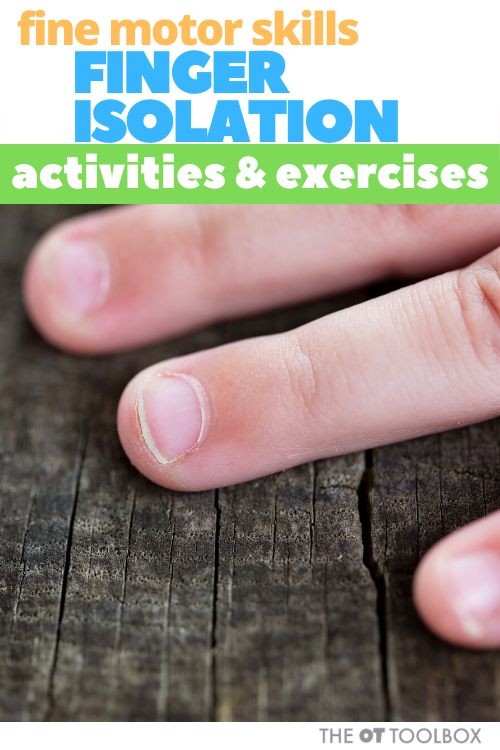

Finger Isolation Activities
So, how can you build and develop finger isolation? There are many ways to build finger isolation skills. You’ll also find more finger isolation activities along with a craft that can help kids become more aware of this fine motor skill. Below are small motor tools to help with development. Add these finger strength exercises to your therapy plans or home programs.
One great way to develop precision in a single digit of the hand is to instruct the individual to tap each finger to their thumb (give them a demonstration so they can mirror you!),
Isolation of the individual fingers really develops with hand strength and coordination through the use of hand clapping games and finger rhyming songs. Show the individual finger and hand games such as “Where is Thumbkin?”, “Itsy Bitsy Spider”, and other rhyming games that involve hand motions.
Overall, fingerplay songs are a powerful tool to support the development of finger isolation!
- Pop bubbles
- Play “I spy” with items around the house and encourage your child to point
- Counting on fingers one at a time
- “Itsy Bitsy Spider” (this is a great beginner motor plan with easy finger isolation hand motion)
- Shadow hand puppets using a flashlight
- Dampen fingers to pick up small items such as glitter, confetti, other small items
- Teaching common finger expressions such as “A okay”, thumbs up, finger guns etc
- “Lizard fingers”: this is one of my favorites that really makes kids laugh, stick small pieces of tape on each finger and have kids pretend to be a lizard and see what they can pick up around the room! (Make sure to have small items that can actually be picked up, we’ve had a couple failures with this activity!)
Other finger isolation ideas here on The OT Toolbox:
- Finger Isolation Game with Bubble Wrap
- Fingerprint Art Finger Isolation Activity
- Sensory Seek and Find
- Fine Motor Alphabet Finger Isolation Activity
- Finger Aerobics
- Easy Clover Fingerprint Art
- Distal Finger Control Exercises
- Slime Pencil Grasp Activity
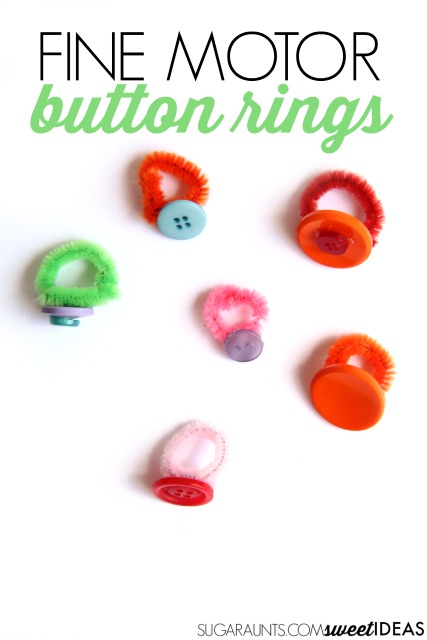
Finger Isolation Crafts
- Make and play with finger puppets
- Finger painting
- Using a pointer finger to trace shapes in foam, slime, various sensory mediums
- Make “spaghetti” strings by rolling play-doh between the index finger and thumb
- Make a “finger soccer board” by folding up a small piece of paper into a triangular shape and have your child “flick” the “ball” into the goal
If there is ever an easy craft that you and the kids make, this is it. These button rings are as cute as they are effective in developing the skills needed for tasks like maintaining a pencil grasp, shoe tying, and managing clothing fasteners.
This post contains affiliate links.
You’ll need just a few items for this craft:
These super cute button rings are a craft that my kids loved making. They wore these rings every day for a while there. (This mom did, too!)
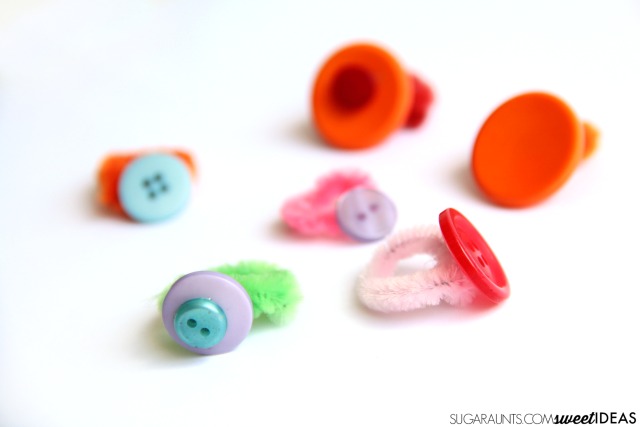
- To make the rings, cut the pipe cleaners into small pieces. You’ll want them small enough to fit little fingers, but a little longer in order to add the buttons.
- Thread the buttons onto one end of the pipe cleaner.
- Twist the two ends together and tuck the end of the pipe cleaner on the outside of the ring (so it won’t rub up against the skin).
- You can add extra buttons and layer different colored buttons for fun rings.
Finger isolation activity with rings
- When wearing the rings, incorporate finger isolation by placing rings on different fingers.
- Ask your child to hold up the finger with a specific colored button or pipe cleaner.
- Try tapping fingers with the rings one at a time by calling out a colored ring and asking your child to play a “SIMON” type of memory game.
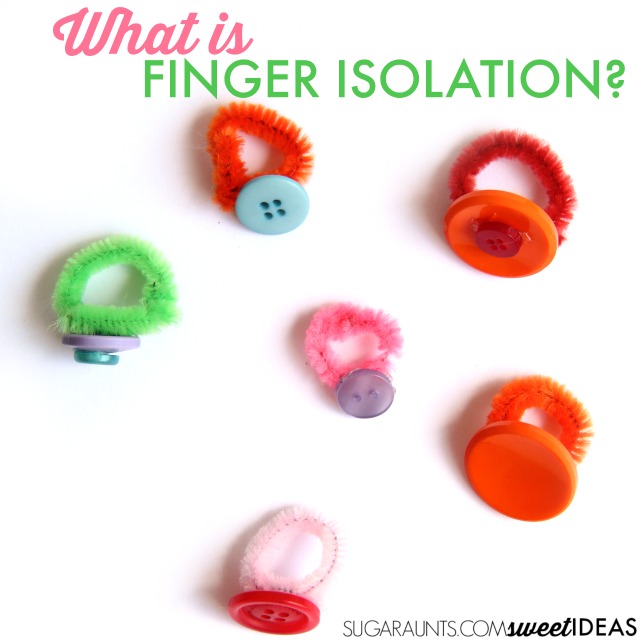
You’ll love these fine motor activities, too:

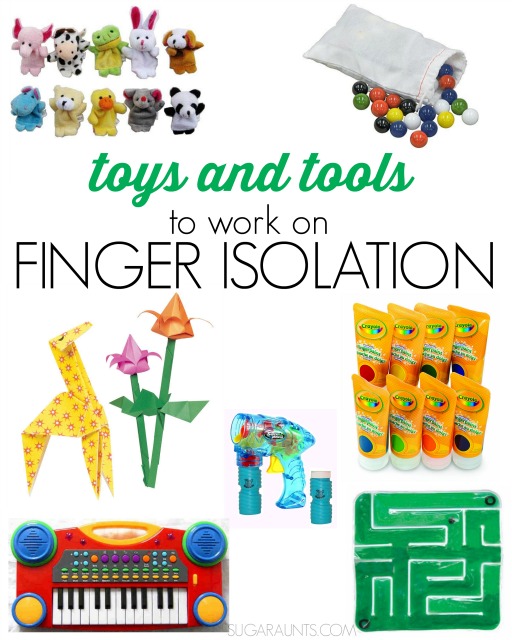
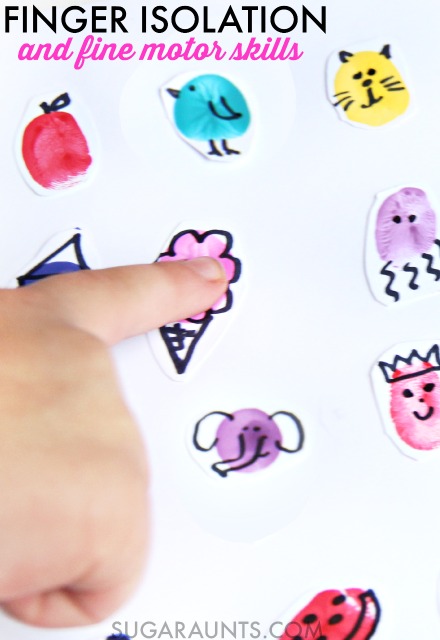
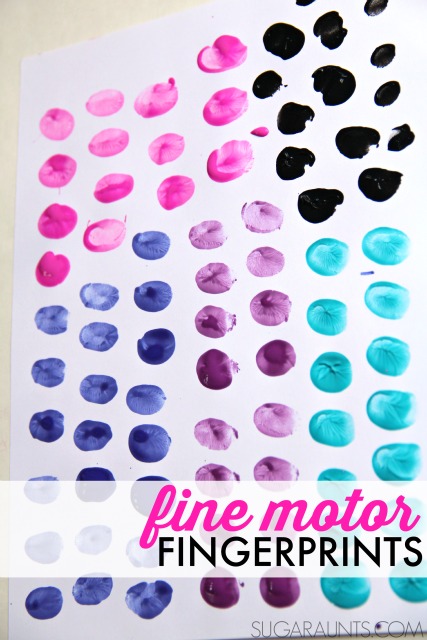
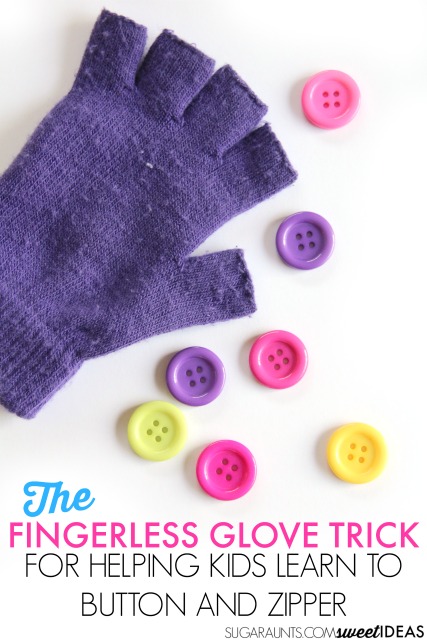
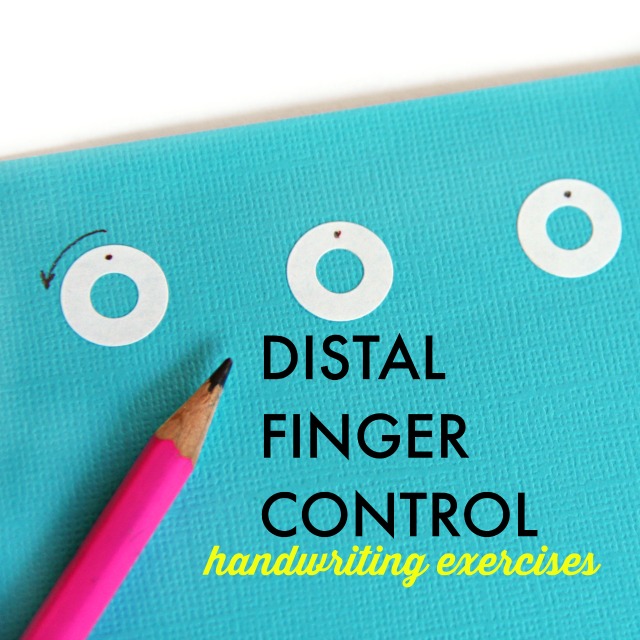
Working on fine motor skills, visual perception, visual motor skills, sensory tolerance, handwriting, or scissor skills? Our Fine Motor Kits cover all of these areas and more.
Check out the seasonal Fine Motor Kits that kids love:






Or, grab one of our themed Fine Motor Kits to target skills with fun themes:
- Frogs Fine Motor Kit
- Unicorns Fine Motor Kit
- Vehicles Fine Motor Kit
- Apple Fine Motor Kit
- Back to School Kit
- Sports Fine Motor Kit
- Outer Space Fine Motor Kit
- Fairytale Fine Motor Kit
- Plus more in our shop!
Want access to all of these kits…and more being added each month? Join The OT Toolbox Member’s Club!

Colleen Beck, OTR/L has been an occupational therapist since 2000, working in school-based, hand therapy, outpatient peds, EI, and SNF. Colleen created The OT Toolbox to inspire therapists, teachers, and parents with easy and fun tools to help children thrive. Read her story about going from an OT making $3/hour (after paying for kids’ childcare) to a full-time OT resource creator for millions of readers. Want to collaborate? Send an email to contact@theottoolbox.com.







1 thought on “What is Finger Isolation?”
Comments are closed.